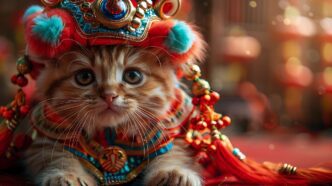In the vast and intricate world of Vedic Astrology, perhaps no tool is more profound for understanding love and marriage than Nakshatra compatibility. For centuries in the East, and now increasingly in the West, couples and families have turned to this ancient system to assess the potential for a harmonious union. This sophisticated method moves far beyond simplistic Sun sign comparisons, delving into the core emotional and psychological makeup of individuals by analyzing their Moon Nakshatra—the specific lunar mansion the Moon occupied at their birth. The purpose is to create a cosmic roadmap, identifying innate strengths and potential friction points to foster a relationship built on genuine understanding, mutual respect, and lasting connection.
Understanding the Nakshatras: The Moon’s Mansions
Before diving into compatibility, it’s essential to grasp what a Nakshatra is. The zodiac, a 360-degree circle, is divided into 12 familiar Rashis or zodiac signs. Vedic astrology adds another layer of precision by dividing that same circle into 27 Nakshatras, or lunar mansions. Each Nakshatra spans 13 degrees and 20 minutes of the zodiac.
While your Sun sign represents your soul, ego, and life force, your Moon sign reveals your mind, emotions, and inner consciousness. The Nakshatra your Moon falls in, therefore, provides an incredibly detailed portrait of your subconscious patterns, emotional responses, and deepest desires. It is the key to understanding how you instinctively react and connect with others, making it the cornerstone of relationship astrology.
The Ashtakoot Milan: An Eight-Fold Path to Compatibility
The most widely used method for judging Nakshatra compatibility is known as Ashtakoot Milan or Guna Milan. This is a systematic, eight-point test (Ashta means eight, Koota means aspect) that compares the birth Nakshatras of a prospective couple. Each Koota represents a different facet of the relationship and is assigned a specific number of points, or Gunas.
The total possible score is 36 Gunas. A score of 18 or higher is generally considered acceptable for a marriage to proceed, with higher scores indicating a more natural and effortless compatibility. A score below 18 suggests significant challenges that will require immense effort, compromise, and awareness to overcome. This system provides a clear, quantitative measure of a relationship’s foundational harmony.
The Eight Kutas Explained
Each of the eight Kutas examines a unique dimension of the relationship, from spiritual alignment to physical attraction. Understanding what each one represents allows a couple to see exactly where their strengths and weaknesses lie.
1. Varna Kuta (Work and Spiritual Compatibility)
This aspect, worth 1 point, assesses the spiritual development and ego compatibility between partners. Traditionally based on a caste system, in a modern context, it relates to one’s inherent approach to work and duty. The signs are categorized as Brahmin (intellectual/teacher), Kshatriya (warrior/protector), Vaishya (merchant/business), and Shudra (service/labor). A good match here suggests a similarity in life purpose and work ethic.
2. Vashya Kuta (Mutual Attraction and Control)
Worth 2 points, Vashya Kuta measures the magnetic pull and power dynamics within the relationship. It determines who may be more influential or dominant. The signs are classified as Chatushpada (four-footed), Dwipada (two-footed/human), Jalachara (water-dweller), Vanachara (wild beast), and Keeta (insect). A high score indicates a balanced and harmonious power dynamic where both partners feel respected.
3. Tara/Dina Kuta (Destiny and Longevity)
This Kuta, carrying 3 points, analyzes the health, luck, and overall destiny of the couple when they are together. It is calculated by counting the nakshatra positions from each other. Certain counts are highly auspicious, indicating mutual prosperity and good fortune, while others are considered challenging, suggesting potential hardships or health issues that may arise from the union.
4. Yoni Kuta (Sexual and Physical Compatibility)
A highly significant factor worth 4 points, Yoni Kuta governs primal instincts and sexual compatibility. Each of the 27 Nakshatras is assigned an animal symbol, such as a Horse, Elephant, Snake, or Tiger. A match between partners with the same animal Yoni is considered perfect. Compatibility between friendly animal types is also good, but a pairing of hostile animals (e.g., Cat and Rat, Mongoose and Snake, Cow and Tiger) indicates deep-seated sexual and physical conflicts.
5. Graha Maitri Kuta (Planetary Friendship)
With 5 points, Graha Maitri evaluates mental and psychological compatibility. It is based on the friendship or enmity between the planetary lords of the couple’s Moon signs (Rashis). If the lords are friends (e.g., Sun and Moon, Mercury and Venus), it indicates natural friendship, easy communication, and shared perspectives. If the lords are enemies (e.g., Sun and Saturn), it can point to fundamental disagreements, ego clashes, and mental friction.
6. Gana Kuta (Temperament and Nature)
This crucial Kuta, worth 6 points, deals with the core temperament of the individuals. Nakshatras are divided into three Ganas: Deva (divine, sattvic, refined), Manushya (human, rajasic, worldly), and Rakshasa (demonic, tamasic, primal). A match between partners of the same Gana is ideal. A Deva-Manushya match is acceptable, but a Deva-Rakshasa pairing is considered the most difficult, suggesting a fundamental clash in values, lifestyle, and worldview.
7. Rashi/Bhakoot Kuta (Emotional and Family Compatibility)
Carrying a heavy weight of 7 points, Bhakoot Kuta examines the emotional bond and the overall prosperity of the relationship. It analyzes the distance between the couple’s Moon signs. A 1/7 or 7/1 axis is excellent, indicating strong attraction and balance. However, challenging positions like 6/8 (conflict and health issues) or 2/12 (financial loss) can create significant problems in daily life and family harmony. A zero score here (Bhakoot Dosha) is a major red flag.
8. Nadi Kuta (Health and Genetics)
This is the most important Kuta, with a maximum of 8 points. Nadi Kuta relates to health, heredity, and the capacity for healthy progeny. The Nakshatras are classified into three Nadis, which correspond to the Ayurvedic humors: Aadi (Vata – wind), Madhya (Pitta – bile), and Antya (Kapha – phlegm). For a match to be successful, the partners must have different Nadis. If both partners have the same Nadi (a condition called Nadi Dosha), it is believed to cause severe health problems for the couple and their children, and traditionally, such a match is strongly advised against.
Beyond the Score: Nuances in Nakshatra Matching
While the 36-point Ashtakoot system is a powerful starting point, a skilled astrologer never relies on the score alone. Several other critical factors must be considered for a complete and accurate assessment of compatibility.
Mangal Dosha (Kuja Dosha)
One of the most feared afflictions in marital astrology is Mangal Dosha, which occurs when Mars is placed in the 1st, 4th, 7th, 8th, or 12th house of a birth chart. This placement can infuse the relationship with aggression, conflict, and volatility. However, if both partners have Mangal Dosha, the negative effects are said to be neutralized, creating a balanced dynamic.
Exceptions and Cancellations
Vedic astrology is a science of exceptions. There are numerous rules that can cancel or mitigate negative combinations, known as Dosha Pariharas. For instance, the dreaded Nadi Dosha can be cancelled if the couple’s Moon signs and Nakshatra Padas (quarters) meet specific criteria. A low Ashtakoot score can often be overlooked if the planetary friendship (Graha Maitri) is strong and the charts show other powerful yogas for marital happiness.
Using Nakshatra Compatibility in Modern Relationships
In today’s world, Nakshatra compatibility should not be seen as a fatalistic judgment but as a tool for profound self-awareness. A low score does not mean a relationship is doomed; it simply illuminates the specific areas that will demand more conscious effort, communication, and compromise.
For example, a couple with a challenging Gana Kuta (temperament) match can learn to respect their fundamental differences in nature rather than trying to change each other. A poor Yoni Kuta (sexual) match can be navigated with open communication and a willingness to understand each other’s physical needs and rhythms.
Conversely, a high score is not a guarantee of a problem-free life. It indicates a strong foundation and a natural flow between the partners, but free will, mutual respect, and continuous effort remain the most critical ingredients for success. The astrological chart provides the map, but the couple must still navigate the journey together.
The Cosmic Blueprint for Connection
Nakshatra compatibility offers a timeless and deeply insightful perspective on love and partnership. By moving beyond surface-level attraction, it uncovers the underlying cosmic energies that shape a couple’s emotional, psychological, and spiritual bond. It provides a detailed blueprint of the relationship’s innate harmony and potential discord. In its highest application, this ancient wisdom does not dictate fate; it empowers couples with the knowledge to understand their unique connection, navigate challenges with grace, and consciously build a life of shared purpose and enduring love.








